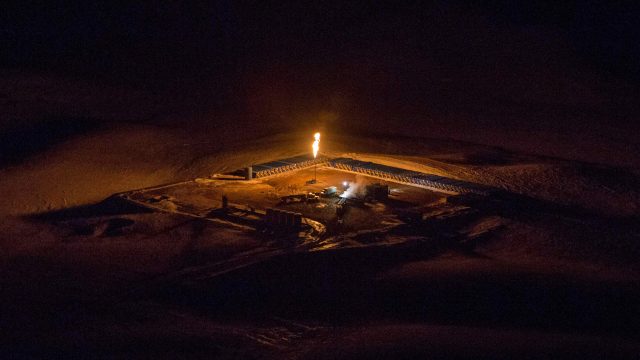Iraqi Visit A Testament To North Dakota's Progress On Flaring

The critics of flaring make two primary points about the issue:
- Oil companies aren’t interested in curbing flaring
- North Dakota’s far too oil-friendly state government lets them get away with it
The facts, however, don’t really support this argument. The oil industry has made remarkable progress on flaring during the oil boom. Despite facing challenges like labor shortages, high construction costs, and landowners not interested in seeing pipelines and other gas infrastructure on their property the industry has held the line on flaring even as the amount of gas being produced in the state has skyrocketed.
Here are the latest numbers, through August 15 of this year:
Since January of 2011 the amount of gas produced in the state has increased 383 percent, but during that same time period the amount of gas captured has increased 442 percent. That’s hardly indicative of an industry that’s uninterested in capturing gas.
At this juncture critics point out that the volume of gas being flared has gone up, even if flaring as a percentage of the total amount of gas produced has declined. This is true, and a valid point, but the industry has also made progress on the volume of gas being flared in recent years. If we go from January 2014 through August 2015 we that, even despite recent increases having to do with low oil prices, the trend on the volume of gas flared in the state is down:
For reasons usually having to do with ideology and partisan politics neither the industry nor the state government gets credit for this from critics, despite the fact that a 442 percent increase in gas capture amid skyrocketing production and an oil boom labor shortage is a truly herculean achievement. But that achievement is recognized by some, including an Iraqi delegation which visited the state recently to find answers for their own flaring problems:
Julio Friedmann, DOE principal deputy assistant secretary for fossil energy, said there are similarities between oil and gas production in North Dakota and Iraq that led to the visit. The invitation was made a year and a half ago through the Joint Cooperation Commission, a bilateral program between the U.S. and Iraq.
“I proposed to them that North Dakota’s experience with capturing gas near the wellhead and generating power might help them,” Friedmann explained. “The Iraqis are serious about reducing flaring, serious about getting gas to market and they have serious needs for power generation.”
Hamed Younis Saleh, Iraq’s deputy minister of gas affairs, and Hillal Ali Ismaeel Mushtaq, director of the general studies directorate, arrived in Bismarck on Monday. Accompanying them were Friedmann, Josh McKearin—a DOE international affairs specialist—and an American capital investor living in Iraq.
According to Friedmann, Iraq flares 1.2 billion cubic feet annually of associated gas from oil production because the country lacks the infrastructure to gather the gas and transport it to central power stations.
It disrupts the whole “North Dakota doesn’t care about flaring” narrative when federal and international officials start looking for answers to flaring reduction in North Dakota.
Which isn’t to say that North Dakota has solved the flaring issue. There is still far too much gas being flared in the state. But they do seem to be on the right track to hit the goal set by state regulators and the industry to get flaring under 10 percent within the next few years.






